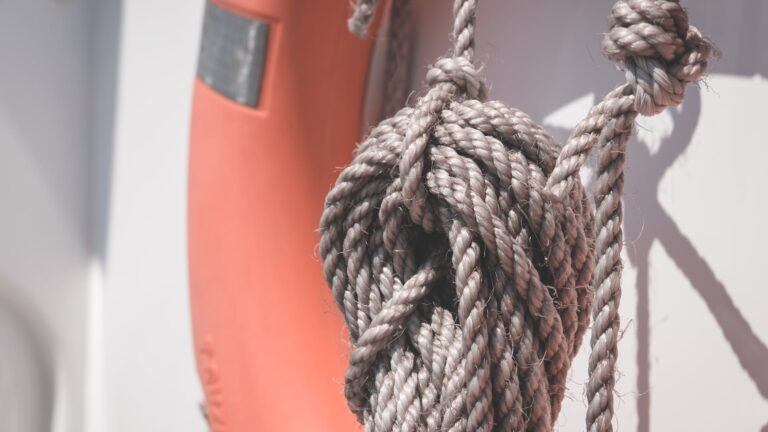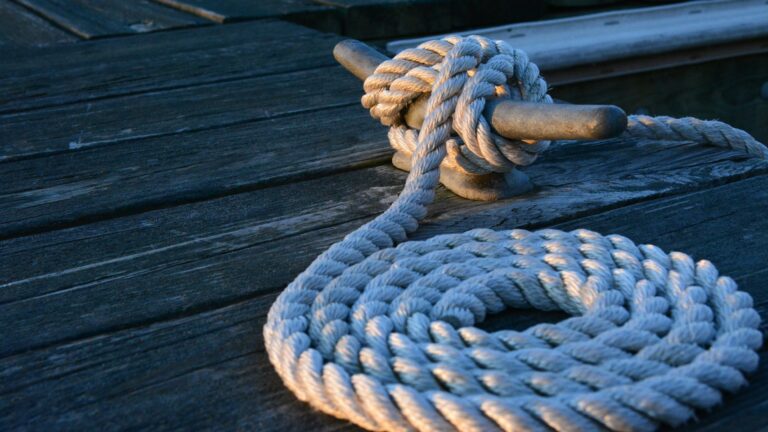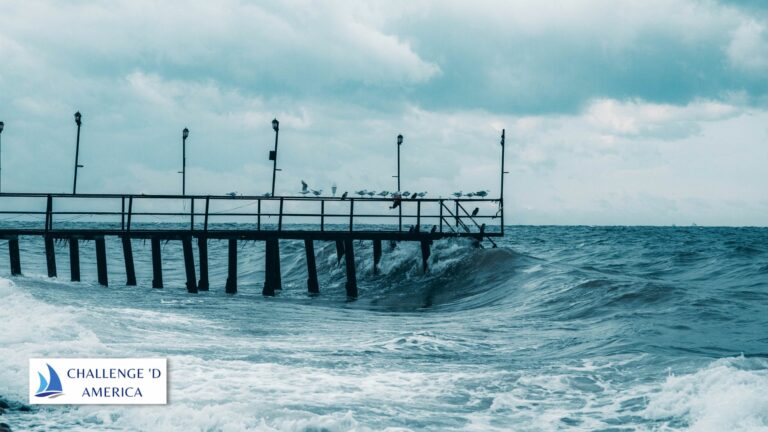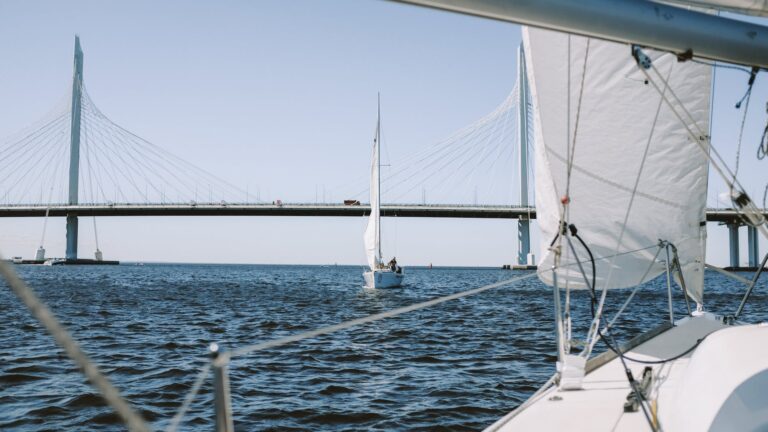How Did Sailors Use The Stars To Navigate?
Navigating By The Stars: How Sailors Used the Heavens to Chart their Course
Sailors have always been able to use the stars to navigate their course, even before modern technology was available to them. In fact, some of the oldest methods of navigation date back thousands of years, when seafaring vessels first began exploring uncharted waters.
By understanding the movement of the stars, sailors were able to determine their heading and calculate their latitude and longitude without any specialized equipment or technology.
This article will explore how sailors used the stars to navigate, what challenges they faced when doing so, and how technology has changed this method of seafaring travel over time.
What Are The Stars?
The stars have been used as a navigational tool since ancient times because they are visible in the night sky and never change position relative to one another (they appear fixed in place).
The North Star (Polaris) is especially important for navigation because it is located directly above Earth’s North Pole and does not move from its position in the sky, it is always in a fixed location relative to other stars in the night sky, making it easy for sailors to find their bearings from it no matter where they are located at sea.
How Can Stars Help With Navigation?
Stars can be used for navigation because they follow predictable patterns in terms of their movements across the sky from east to west each night (known as diurnal motion).
Additionally, some stars rise above the horizon (rise and set) while others remain visible all night long (circumpolar). By observing these patterns, sailors were able to determine their current location on Earth by noting which constellation and star patterns were visible in the night sky at that time.
What Are Rise And Set Stars?
Rise and set stars are those that appear above the horizon at certain times during a given night before setting below it again a few hours later, these patterns can be used by sailors to identify which direction they are currently sailing as well as which direction they need to go in order to reach their destination if they know where they want to go beforehand (such as a particular port).
Additionally, these rise and set stars can help sailors calculate latitude (distance north or south from the equator) by measuring how high or low these particular stars appear above/below the horizon at any given point in time, this allows them to estimate how far north or south of the equator they currently are located at sea without any specialized tools or equipment.
How Did Sailors Use The Stars To Determine Their Heading?
Sailors used a combination of observation and mathematics in order to determine their current heading while out at sea, firstly, they would observe which constellations were visible in order to identify where north was located relative to them (the North Star being especially helpful here).
Once north had been identified, they could then use basic trigonometry calculations based on angles between constellations/stars in order calculate distances between two points on Earth’s surface (i.e., how far away they were from one point vs another).
This allowed them to estimate where exactly they currently were located relative both points – as well as plot out a course towards either one – without needing any specialized tools or equipment beyond what was available on board ship itself!
How Did Sailors Calculate Latitude And Longitude?
Sailors used a combination of rise-and-set star observation combined with basic trigonometry calculations based on angles between constellations/stars in order calculate both latitude (distance north/south from equator) and longitude (distance east/west from prime meridian) coordinates for any given point on Earth’s surface, this process was known as “celestial navigation” and allowed them plot courses towards specific ports without needing any specialized tools or equipment beyond what was available on board ship itself!
Additionally, by calculating latitude coordinates accurately enough – such as by using accurate timekeeping instruments – sailors could even determine their exact position on Earth’s surface without needing any outside assistance whatsoever!
This process took a great deal of practice though, so only experienced navigators who had spent many years honing their skills could accurately chart courses using this method reliably enough for safe travel across open seas!
What Other Methods Of Navigation Were Used By Sailors?
In addition to using celestial navigation techniques such as those described above, some early-modern European sailors also made use of more primitive methods such as dead reckoning which involved estimating approximate distances sailed based off previous measurements taken during previous voyages combined with observational data collected along current voyages (such as wind speed/direction changes), however this method was often unreliable due its lack accuracy compared with more refined celestial navigation techniques developed later on during Age Of Exploration era onwards into modern times!
What Is Celestial Navigation?
Celestial navigation is an ancient form of seafaring navigational technique that relies heavily on accurate observations made while out at sea, specifically those related what constellations/stars are visible overhead throughout various times during each given day/night cycle across different areas around world’s oceans!
This technique involves calculating both latitude & longitude coordinates based off angles between constellations/stars observed within night sky combined with basic trigonometric & mathematical calculations performed afterwards, this allows sailor accurately chart course towards desired destination without needing any outside assistance whatsoever!
How Did Technology Change The Way Sailors Navigated?
As technology advanced over time so too did methods available for safely navigating open seas, most notably through introduction of accurate timekeeping instruments such as chronometers which allowed for more precise calculation of latitude & longitude coordinates than ever before possible with just naked eye observations alone!
Additionally advent GPS systems completely revolutionized way maps were created & plotted out allowing mariners easily identify exact positions land masses oceanside within just few clicks button compared days spent observing & calculating manually previous eras beforehand! As result sailing today much easier safer than ever before due advances made various technologies developed over centuries gone past!
What Challenges Did Sailors Face When Navigating By Stars?
Navigating by starlight presented many challenges for early-modern European mariners due lack accuracy offered up primitive celestial navigational techniques available at time, most notably difficulty accurately determining exact location vessel without having access specialized tools & instruments such chronometers needed measure precisely enough latitudinal & longitudinal coordinates required plotting course correctly over open seas!
Additionally weather conditions played big role too since clouds storms could easily obscure view night sky preventing navigators from making necessary observations required orient themselves correctly chart course desired destination safely arrive there unharmed!
Conclusion
Navigating by starlight has been an important practice for seafarers since ancient times due its relative simplicity compared more modern technologies now available today, however even though celestial navigation offers up quick & easy way chart courses over open seas there still many challenges inherent doing so need addressed properly ensure safe arrival desired destination every single voyage undertaken upon seaside despite whatever obstacles thrown its path along way there!
While advances made various technologies aid greatly matters still stand true today that those brave enough take helm wooden vessels must possess wide range navigational knowledge make sure arrive port safely once more after each journey undertaken upon waves blue yonder!







